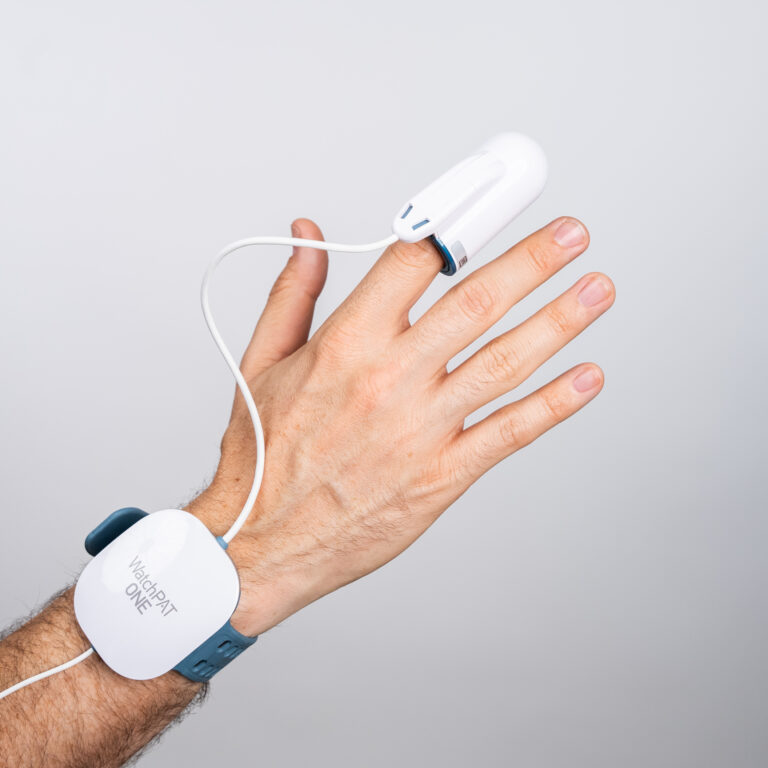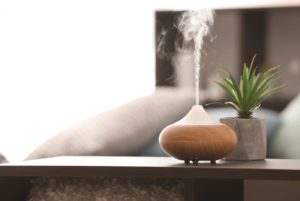Is It Bad to Sleep With a Bra On?
Sleeping with a bra on has both pros and cons—and ultimately, whether or not to wear one to bed is a personal choice that depends on the sleeper’s needs and preferences. There is no scientific evidence that sleeping in a bra has long-term health consequences or any impact on breast size, shape, or position on the chest.
Pros to Sleeping With a Bra On
Many agree that a well-fitting bra provides breast support and limits discomfort, which may be why many people choose to sleep in a bra. Healthcare professionals may also recommend sleeping with a bra on during certain circumstances, such as when breastfeeding or recovering from breast surgery.
Struggling to Stay Awake? Take an At-Home Sleep Test

our partner at sleepdoctor.com
LAST CHANCE: 20% off Home Sleep Tests
Buy Now“Truly grateful for this home sleep test. Fair pricing and improved my sleep!”
Dawn G. – Verified Tester
May Alleviate Breast Pain and Discomfort
Breast discomfort is a common experience. For those who have breast pain, supportive devices, such as a bra, are often first line treatment. Individuals with large breasts may have pain in their breast tendons, their chests, and in other areas of the body that experience strain. Additionally, hormonal changes can cause breasts to feel tender in the leadup to menstrual periods or during pregnancy.
About a third of people with breast pain find that it interferes with their sleep. Even when a person is lying down, breasts can tug at the chest wall or hang, which may feel uncomfortable or even painful. Some people find that wearing a soft, well-fitting bra to bed alleviates these problems by providing support.
May Absorb Moisture and Reduce Friction
As with any area of the body where there are skin folds, the area beneath the breasts can become irritated due to friction, moisture, and a lack of ventilation. These conditions also make skin in this area more susceptible to infection . Skin irritation is especially common for people who have large breasts or more tissue in the lower portion of their breasts, which can increase skin-to-skin contact.
Wearing a bra—whether in the daytime or at night—provides a layer of fabric that can absorb moisture and reduce friction, limiting the skin irritation that can occur between the breast and the abdomen. Bras made from cotton may be especially effective for this purpose.
May Be Helpful While Breastfeeding
Some people have painful swelling of the breasts as milk production increases . Wearing a comfortable nursing bra around the clock can help support tender breasts as the body adjusts to breastfeeding. Additionally, breastfeeding individuals sometimes leak milk. Wearing a nursing bra overnight, with cotton pads to absorb milk, can protect clothes and bedding from leaks.
It is important that nursing bras are not too tight. Bras that are overly constricting can suppress milk production and lead to plugged milk ducts .
May Provide Protection While Healing from Surgery or Piercings
Often, people who undergo breast surgeries are advised to sleep in a bra for several weeks following the procedure. Bras can help hold gauze and drains in place, and in the following weeks, they can provide support and protection as the body heals.
Similarly, some people prefer to sleep in a bra following nipple piercing. Wearing a comfortable cotton sports bra may help keep the wound clean and protect the piercing from catching on bedding or sleepwear during the healing process.
Cons to Sleeping in a Bra
The disadvantages of sleeping in a bra mainly come down to personal preferences for comfort.
May Cause Skin Irritation and Chafing
Those who have very sensitive skin might find that wearing a bra overnight can cause irritation or chaffing, just like any other tight item of clothing. Bra straps that cut into the shoulders can also be uncomfortable.
May Restrict Circulation
A bra that is too tight, such as a high impact sports bra, may inhibit circulation and cause discomfort. Those who experience stiffness and pain in the neck and shoulders from wearing a bra all day may find welcome relief in taking the bra off to sleep.
Myths About Sleeping in a Bra
Several widely held beliefs about sleeping in a bra are not supported by scientific evidence.
Does Sleeping in a Bra Protect Against Sagging?
There is no evidence that sleeping in a bra is an effective way to maintain breast shape, size, fullness, or position on the chest.
There are several factors that are known to contribute to breasts sitting lower on the chest, including:
- Pregnancy
- Weight gain or weight loss
- Aging
- Menopause
- Smoking
- High body mass index
- Large breasts
Sleeping in a bra does not address the mechanisms behind these factors—for instance, increases or decreases in breast tissue or loss of elasticity in skin or breast ligaments.
Does Sleeping in a Bra Prevent Breast Growth?
There is no evidence that wearing a bra affects breast growth during puberty. Breast size depends on hormones and a person’s individual genetics.

Still have questions? Ask our community!
Join our Sleep Care Community — a trusted hub of sleep health professionals, product specialists, and people just like you. Whether you need expert sleep advice for your insomnia or you’re searching for the perfect mattress, we’ve got you covered. Get personalized guidance from the experts who know sleep best.
References
5 Sources
-
Golshan, M. (2022, April 4). Breast pain. In A. Chagpar (Ed.). UpToDate., Retrieved May 3, 2023, from
https://www.uptodate.com/contents/breast-pain -
Brodell, R. & Dolohanty, L. (2022, May 20). Intertrigo. In J. Fowler (Ed.). UpToDate., Retrieved May 9, 2023, from
https://www.uptodate.com/contents/intertrigo -
Moldenhauer, J. (2022, September). Overview of postpartum care. Merck Manual Consumer Version., Retrieved May 3, 2023, from
https://www.merckmanuals.com/home/women-s-health-issues/postpartum-care/overview-of-the-postdelivery-postpartum-period -
Spencer, J. (2023, July 23). Common problems breastfeeding and weaning. In S. Abrams & J. Drutz (Ed.). UpToDate., Retrieved May 9, 2023, from
https://www.uptodate.com/contents/common-problems-of-breastfeeding-and-weaning -
Hansen, J. & Chang, S. (2023, April 19). Overview of breast reduction. In A. Chagpar & A. Colwell (Ed.). UpToDate., Retrieved May 10, 2023, from
https://www.uptodate.com/contents/overview-of-breast-reduction




















































